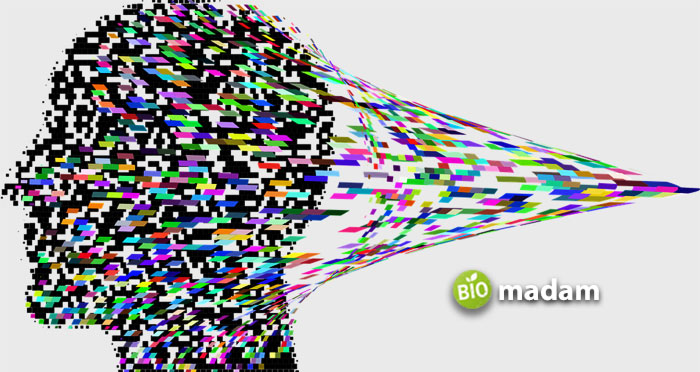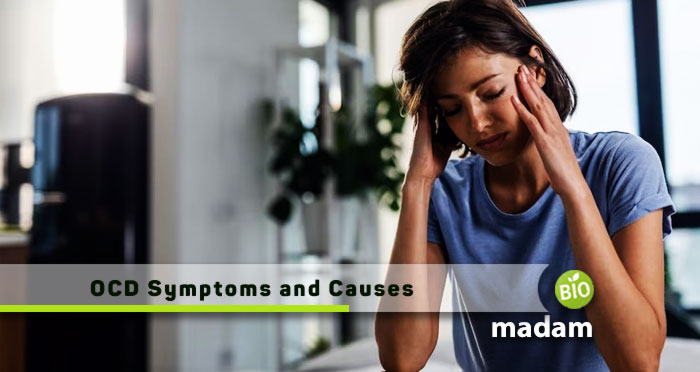Recently updated on August 31st, 2023 at 11:05 am
Obsessive-compulsive disorder (OCD) is a common, chronic mental health condition characterized by persistent, unwanted thoughts, images, or impulses (obsessions) and repetitive behaviors or mental acts (compulsions). A person with OCD feels driven to perform these actions in response to the obsessions or according to a set of strict rules. These symptoms cause significant distress, take up a lot of time (more than an hour a day), and routinely interfere with daily life.
What are the Common Symptoms of OCD?
OCD symptoms vary from person to person, but common obsessions include:
- Excessive fear of contamination and germs, like bacteria and virus.
- A need for symmetry or exactness.
- Doubts about one’s memory or morality.
- Unwanted aggressive or sexual thoughts.
Common Compulsions Include:
- Excessive cleaning and handwashing.
- Checking things repeatedly.
- Repeating words or phrases.
- Counting things.
These compulsions are performed in response to obsessions or according to strict rules.
Other Common OCD Symptoms:
- Persistent thoughts, images, or impulses (obsessions)
- Repetitive behaviors or mental acts (compulsions) that a person feels driven to perform in response to the obsessions or according to strict rules
Less Common OCD Symptoms:
- Superstitious rituals, such as touching objects in a specific order
- Hoarding
- Hair-pulling (trichotillomania)
- Skin-picking (dermatillomania)
- Repeatedly seeking reassurance from others
- Mental rituals, such as repeating prayers or phrases silently
- Cognitive counting or repeating numbers
- Continually counting objects
- Repeatedly arranging objects
- Frequently checking one’s own body
Rare OCD Symptoms:
- Fear of losing control and harming oneself or others
- Fear of blasphemy or profanity
- Fear of losing religious faith
- Fear of losing one’s identity
- Fear of forgetting important memories
- Fear of acting on impulse
- Fear of losing things
- Fear of losing contact with reality
- Fear of one’s thoughts
Be advised that this list is not exhaustive, OCD symptoms can vary significantly between individuals, and it’s important to consult a mental health professional for an accurate diagnosis and treatment plan.

What are the Causes of OCD?
The exact cause of OCD is not known, but several factors may be involved, such as a combination of genetic, neurological, and environmental factors. Studies seem to suggest that OCD may be associated with structural and functional abnormalities in certain brain regions and circuits, particularly the orbitofrontal cortex, the anterior cingulate cortex, the basal ganglia, and the thalamus.
Additionally, studies have found that there is a strong heritability component to OCD and that various genes are associated with OCD, including genes related to the serotonin system. Environmental factors, such as stress, trauma, disease or infection, have also been found to trigger or worsen OCD symptoms.
Male & Female Differences with OCD
- OCD is more common in males than females in childhood, but it is more common in females than males in adulthood.
- Studies have suggested that males with OCD may focus more on aggressive, sexual, and religious obsessions. Comparatively, females with OCD may focus more on cleaning, symmetry, and harming obsessions.
- Females tend to have higher rates of comorbidities, such as stress and depression, than males.
Incidences of OCD:
- According to the World Health Organization (WHO), OCD affects around 1-2% of the population worldwide, making it a common mental disorder.
- In the United States, OCD is one of the most common mental disorders, affecting millions of people.
Response to Treatments Over Time:
- Studies have shown that cognitive-behavioral therapy (CBT) and medications, particularly selective serotonin reuptake inhibitors (SSRIs), effectively reduce or eliminate OCD symptoms.
- Medications, such as SSRIs, tend to work more quickly, with results typically seen within 4-8 weeks.
- CBT tends to be slower to take effect, but it is associated with a lower risk of relapse than medications alone and is a good option for those who wish to avoid taking medication.
- Treatments for OCD can be effective in reducing symptoms. Still, it is important to note that OCD is a chronic condition, so ongoing therapy or medication may be needed to maintain symptom relief.
It’s also worth noting that response to treatment can vary significantly among individuals; it’s important to consult with a mental health professional to determine the best course of treatment for each individual.
Treatment and Management of OCD
Effective treatments for OCD are available and can significantly reduce or eliminate symptoms. The primary treatment for OCD is cognitive-behavioral therapy (CBT), a type of psychotherapy that focuses on identifying and changing negative patterns of thought and behavior.
Medications, particularly selective serotonin reuptake inhibitors (SSRIs), are also commonly used to treat OCD. These drugs increase serotonin levels, a neurotransmitter that regulates mood and behavior, in the brain. In addition to therapy and medication, self-help strategies such as stress management, relaxation techniques, and mindfulness can also help manage OCD symptoms.
Deep Transcranial Magnetic Stimulation (Deep TMS™) is a noninvasive treatment that uses magnetic fields to stimulate nerve cells in the brain. It has been FDA-cleared as a treatment for OCD, alongside cognitive-behavioral therapy and medications such as selective serotonin reuptake inhibitors (SSRIs). Deep TMS is particularly effective for individuals who have not responded to traditional treatment methods, or who cannot tolerate the side effects of medications.

One of the most notable benefits of Deep TMS is its clinically-backed safety and efficacy, with few reported side effects, as it is noninvasive procedure, no anesthesia is required and it doesn’t have the same side effects as medication. Some small, temporary discomfort on the scalp might be experienced where the magnetic coil is held.
Deep TMS uses a magnetic field to stimulate nerve cells in the brain, specifically targeting the area believed to be involved in OCD symptoms, called the orbitofrontal cortex. This treatment modifies the activity in this area, reducing the symptoms of OCD. Deep TMS is usually given 5 times a week for 4-6 weeks, for around 20 minutes per session.
Conclusion
In conclusion, OCD is a common, chronic mental health condition affecting millions of people. Despite its complexity, research has made considerable progress in understanding its symptoms, causes, and effective treatments. By gaining a deeper understanding of OCD, individuals can work towards developing effective coping mechanisms to manage their symptoms better and improve their overall quality of life.

Hi, they call me Jenna, and I am also known for achieving a gold medal during my Ph.D. in science life. I always had a dream to educate people through my utmost writing hobby. So, I chose this blogging path, and Biomadam gave me this opportunity to present for them. I now stand to entertain you. Continue reading my articles & discuss if you’ve any confusion through the comment section below.

